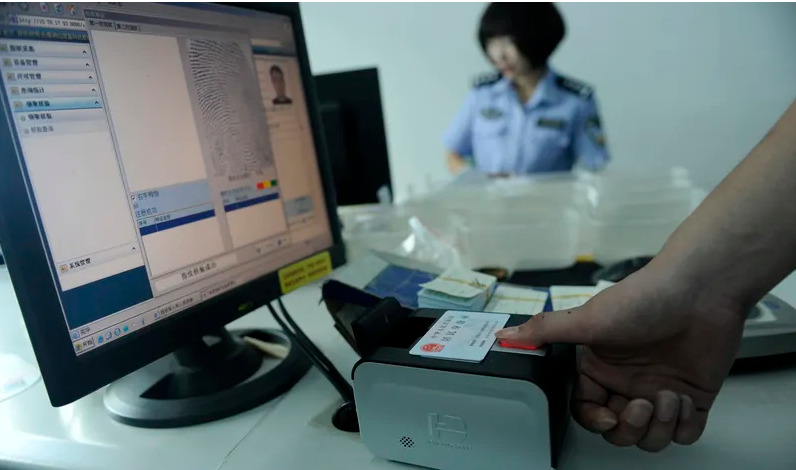
In 350 BCE, China’s earliest identity certificate (known as 照身帖) only included a hand-carved portrait. It was invented by the scholar Shang Yang and issued by the Qin government in the Warring States period (475 – 221 BCE). It was a flat bamboo board with the holder’s name, occupation, portrait, and official seal carved on it. Everyone needed one to pass checkpoints on the road or check into guesthouses.
In the Tang dynasty (618 – 907), the small metal fish tally was divided into left and right halves that fit together. One half was left with the imperial court; while the official carried the right half — putting them together could prove their identity. In the Ming dynasty (1368 – 1644), a similar system saw officials identify themselves with a small plate of animal bone or ivory (known as a 牙牌) hung at their waist.
When China began market reforms in 1978, people gained more freedom to move around. But traveling on trains, staying in hotels, or moving job locations meant presenting one’s hukou and an official letter from an employer, making it inconvenient and inefficient for workers to migrate. The first generation of ID cards introduced in 1984 was partly meant to make the labor market more flexible and people’s lives more convenient. The following year they became mandatory (强制性的) for all over the age of 16.
By 1988, the cards were being printed rather than hand-written. But they remained easy to counterfeit (伪造). In 1999, a teacher surnamed Wang was hit with a 2,000-yuan phone bill despite not owning a phone. In 2001, a Beijing resident surnamed Liang said she had received letters from telecommunications companies after someone used her lost ID card to buy 30 mobile phones.
From the 1990s, efforts began to make ID cards, now essential for everyday life and containing sensitive information, more secure. Since 1999, each citizen has been assigned a unique 18-digit citizen number to go with their card. In 2004, the government launched the second generation of ID cards including digital anti-fraud measures. To fight identity theft, the ID card system began recording fingerprint information in 2013.
奇速英语 原创编写 版权所有 侵权必究! 每日更新 个性化阅读 英语飙升!

